Documentation
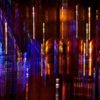
“Research as Embodied Practice: Emotion and the dancing self” – Sebastian Kann
In mainstream culture, emotions almost always seem to be connected to an object, image, or speech act – that is, to an ‘other’ – which makes the subject feel a certain way. So, for example, ‘it makes me feel sad to see images of suffering’, or ‘it makes me feel happy that my friends threw…
Read more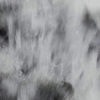
“Understanding prehistoric art” – Alexandra Kinevskaya
It is still debated by many scholars in art history whether or not should Prehistoric art, such as cave drawings, be studied as an art form at all or just considered a historical and archaeological phenomenon. This is due to the fact, that there are no other sources or documents from that era that could…
Read more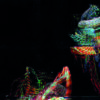
“Exploring issues of embodiment in VR through the scope of Cave Art” – Elissavet Kardami
Nicolas Salazar’s seminar on cave art, created a strange feeling of anachronism. In a period characterized by a “digital turn”, and in a period the where the “virtual” poses new ontological questions about issues of embodiment and human experience, how can cave art offer new insights on art, experience and culture? The easy answer would…
Read more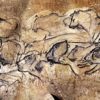
“Two Animals One Line” – Tamalone van den Eijnden
As part of the Transmission in Motion Seminar 2017/2018 Nicholas Salazar Sutil gave a lecture on “How to get a Wall to Dance.” His speech was based on the objects of limestone, caves and cave paintings. However, while speaking of these objects of the Palaeolithic age, often also referred to as ‘prehistory,’[1] he was simultaneously…
Read more
“Dancing the Cave” – Gido Broers
Before discussing the movement in cave art, I will address briefly movement in another art form, namely dance: “In watching a collective dance – say, artistically successful ballet – one does not see people running around; one sees the dance driving this way, drawn that way, gathering here, spreading there – fleeing, resting, rising, and…
Read more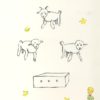
“Imagination transmission through Exupérism: what’s in the box?” – Max Peters
Nicolas Salazar Sutil’s engaging lecture gave fascinating insights into prehistoric artworks, through an analytical approach reminiscent of an archaeologist or even geologist. Through his discussion of caves, limestones, sedimentary rocks and the impact of darkness on artists, he showed us how the principles of artistic practices can be recognized and interpreted in centuries-old rock paintings. The key…
Read more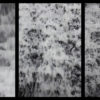
“Exploring Movement: Salazar’s Posthuman Notion of Transmission Media” – Irene Alcubilla Troughton
During this first lecture, in the frame of the Transmission in Motion Seminar, Nicolas Salazar developed certain ideas about how rocks, and especially limestones in caves, can transmit as much as any digital media nowadays. The main idea that I got from this session could be summarised as it follows: transmission is not something confined…
Read more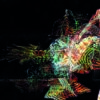
“Tacit Knowledge in Matter and Motion” – Lisa-Maria van Klaveren
In his presentation, Nicolas Salazar Sutil offers a new beginning, reaching back to pre-historic knowledge. This opening, that he is mapping out in his forthcoming book Matter in Transmission (Bloomsbury), overcomes the idea that transmission is only possible in conventional telecommunicational forms, such as electricity, radio-waves, microwave and infra-red. Instead, he invites elements – water,…
Read more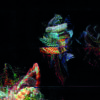
“Transmission in Motion Seminar” (2017-2018)
Technological developments inform the ways information travels through media, turn archives into ‘dynarchives,’ and set knowledge cultures in motion. Such developments foreground the performativity of practices of transmission and the materiality of mediation; moreover, they point to movement and embodiment as key to both transmission and mediation. Moving images, motion capture, virtual mobility, mobile media,…
Read more
Transmission in Motion invites you to their 1st event!
We proudly inaugurate a series of events organized by the research community Transmission in Motion! For its first event, Transmission in Motion invited four renowned researchers to Utrecht to share their knowledge about the “possible” influence of the arts in the development of social robots. Ruairi Glynn, (Associate professor at the Bartlett School of Architecture, University College London), Elizabeth Jochum (Associate at…
Read more
